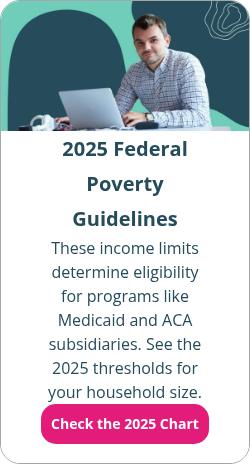What are the ACA safe harbors for ALEs?
By Elizabeth Walker on May 6, 2024 at 10:00 AM
The Affordable Care Act’s (ACA) employer mandate requires applicable large employers (ALEs)—organizations with 50 or more full-time equivalent employees (FTEs)— to offer affordable health insurance that meets minimum essential coverage (MEC) and minimum value standards to at least 95% of their full-time employees.
To help ALEs determine whether their health coverage is affordable for employees, the federal government created “safe harbors” to calculate the affordability of healthcare plans, including traditional group health plans and individual coverage health reimbursement arrangements (ICHRAs).
Since employers can’t know their full-time employees’ household incomes, they can use these safe harbors to determine affordability and avoid ACA penalties in the form of employer shared responsibility payments. But how do you calculate ACA affordability?
In this post, we’ll review how to determine affordability and discuss the different types of safe harbors available to ALEs.
Takeaways from this blog post:
- Employers must offer affordable healthcare coverage to full-time employees to avoid penalties under Section 4980H(b) of the Internal Revenue Code.
- The affordability threshold for employee healthcare contributions is 9.96% of household income in 2026, up from 9.02% in 2025.
- ACA safe harbors, such as those based on income, location, and prior coverage, help employers determine the affordability of their health benefits.
What are the affordability requirements?
Employers who are ALEs must offer affordable healthcare coverage to at least 95% of their full-time employees and their dependents to satisfy the Section 4980H(b) employer shared responsibility provision. According to federal regulations, no ALE employee in 2026 should contribute more than 9.96% of their household income toward obtaining health coverage. This is an increase from 2025’s affordability threshold of 9.02%.
Generally, changes to the affordability requirement from the previous year mean that if your group health plan or ICHRA was affordable before, it might not be now. But since the affordability threshold increased, plans that were affordable in 2024 should be affordable in 2025. Always be sure to run an ACA affordability test with the following safe harbor options to be sure you’re meeting the new requirements for 2026.
What are the ACA safe harbors?
Employers that offer unaffordable coverage to their full-time employees or a policy that doesn’t meet minimum value coverage requirements can be subject to an ACA penalty1. Safe harbor selection and qualification are essential for employers looking to avoid penalty amounts.
Each safe harbor method has pros and cons depending on your and your employees’ needs. Some are relatively simple, while some can be more complex and personalized.
Let’s go through the wide variety of safe harbors that can help you determine the affordability of your employer-sponsored health benefit and set you up for success in preparation for tax season.
Household income safe harbors
There are three ACA affordability safe harbors for ALEs. These safe harbors are a test for affordability based on only the income information available to the employer. This means employers can substitute a full-time employee’s household income amount with the amounts calculated using these options.
Remember, safe harbors exist to help employers determine if their health benefit is affordable—they don’t help determine if the plan provides MEC and minimum value.
Employers can use these three safe harbors to prove ACA affordability when submitting their annual IRS return:
- The employee’s Form W-2 wages: With this safe harbor, the monthly premium for self-only coverage can’t exceed an affordability percentage of 9.96% of the employee's Form W-2 Box 1 wages for 2026. Annual wages in Box 1 should be the employee's gross income minus pre-tax deductions. The coverage must be affordable for each month the employee is eligible.
- The W-2 method is a good option for employers with employees who generally work the same number of hours each week or are exempt and have a consistent annual income.
- The employees' rate of pay: With this method, employers can use an employee’s regular rate of pay at the start of the coverage period—whether an hourly rate or a monthly salary—to determine affordability. The monthly premium for self-only coverage shouldn’t exceed 9.96% of either the employee's lowest hourly rate of pay multiplied by 130 hours—the minimum amount of monthly work hours for an employee to be full-time under the ACA—or the employee's monthly salary.
- Remember, regardless of whether you have hourly or salaried employees, this option can expose you to a greater risk of penalties if your workers have varying wage rates.
- The federal poverty line (FPL): This popular safe harbor makes calculating affordability the easiest because employers don’t have to calculate for individual employees. Instead, they use the federal poverty line as a baseline, which is the threshold the federal government adjusts based on the annual cost of living. For 2026, the FPL for a one-person household is $15,650 annually. For the IRS to consider the coverage affordable in 2026, the maximum monthly premium amount for a self-only plan can’t exceed $129.89.
- While this is the easiest method to use, it could end up costing employers more if their employees earn more than the FPL. That’s because, with this method, employers must contribute more to health insurance premiums or ICHRA allowances.
All ALEs must report employee health insurance coverage on Form 1095-C with the applicable code. Use code 2F on Line 16 if you used the W-2 Box 1 method, code 2H for the affordability rate of pay method, or code 2G for the FPL method.
Location safe harbor
Part of the affordability standard calculation depends on the rating area where your employee works. Using the location safe harbor, an employer can use an employee’s primary site of employment rather than their home address to determine the applicable rating area and availability of silver plans.
The “primary employment site” refers to the geographic location where the employer reasonably expects the eligible employee to work on the first day of the plan year or the first day they’re eligible for health insurance coverage.
How to determine other locations to meet the safe harbor requirements:
- If the employee’s location changes for a permanent or indefinite period, update the primary employment site on the first day of the second month after the employee begins work at the new location.
- If an employee regularly works remotely but sometimes reports to an office, the location they report to is considered the primary employment site.
- If an employee solely works remotely, their residence is the primary employment site.
The location safe harbor is advantageous because employers can look at the same rating area for all employees working at a single location.
Look-back safe harbor
The look-back safe harbor allows employers to use the lowest-cost silver plan from a previous calendar year to calculate the affordability for an upcoming plan year. For example, employers can use 2024 plans to determine 2025 affordability for health coverage.
The look-back safe harbor regulations include the following guidelines:
- For a plan starting on January 1, an employer can use the monthly premium of the lowest-cost silver plan from January of the prior calendar year to help determine affordability.
- For a plan that starts after January 1, an employer can use the monthly premium of the lowest-cost silver plan from January of the current calendar year.
Though the proposed safe harbor allows an employer to use an applicable look-back month to determine premium cost, they must use the employee’s age as of the first day of the plan year, or the first day they are eligible, and their current applicable location.
If an employee’s location changes during the plan year, the employer can still use the look-back month to determine the lowest-cost plan, but must use the employee's updated location to get the correct cost.
This safe harbor is beneficial because it gives employers time to determine affordability before the start of their plan year.
How to calculate ICHRA affordability
If you want to offer an ICHRA over a traditional group plan as an ALE, the amount that an employee pays for individual health insurance coverage after they’ve used their ICHRA benefit can’t be more than 9.96% of their household income in 2026. You should use the lowest-cost silver plan on the local exchange for the calculation and subtract your ICHRA contributions from the cost of the premium. The federal government doesn’t allow employee contributions for HRAs.
The monthly premium for the lowest-cost silver plan, minus the ICHRA monthly allowance you offer, shouldn’t exceed the affordability percentage of 9.96% of the employee’s monthly household income. If you meet this requirement, the ACA considers your ICHRA benefit affordable.
You can use this calculation to determine the affordability of any allowances for employee classes in your company.
Conclusion
While employers aren’t required to use any of these safe harbors, they can be very helpful when determining affordability for your employees and avoiding potential penalties. Choosing an IRS safe harbor for ACA affordability can be tricky. However, you don’t need to apply one safe harbor across your entire workforce, so choose what makes the most sense for your company.
If you want to offer your employees a flexible and comprehensive alternative to group health insurance, consider going with an ICHRA. At PeopleKeep, we can help you stay on top of compliance regulations that impact your ICHRA benefit to ensure your employees always have compliant coverage.
This article is for informational purposes only. You shouldn’t take it as tax or legal advice. If you have questions about calculating your specific health plan or ICHRA affordability, consult with legal counsel or a tax advisor.
This article was originally published on October 4, 2019. It was last updated on May 6, 2024.
1. https://acatimes.com/affordable-care-act-penalties-increase-in-again-in-2024/
Check out more resources
See these related articles

Can I have an HRA and an FSA at the same time?
Learn if you can have an HRA and an FSA at the same time. Understand the rules, benefits, and how these accounts can work together for healthcare costs.

Does the ICHRA satisfy the employer mandate?
Find out if the Individual Coverage HRA (ICHRA) satisfies the employer mandate. Understand how ICHRA can help businesses meet health coverage requirements.

Employee burnout: what it is and how to prevent it
Learn the causes and signs of employee burnout, including how to create a positive work environment where employees feel safe and appreciated.



